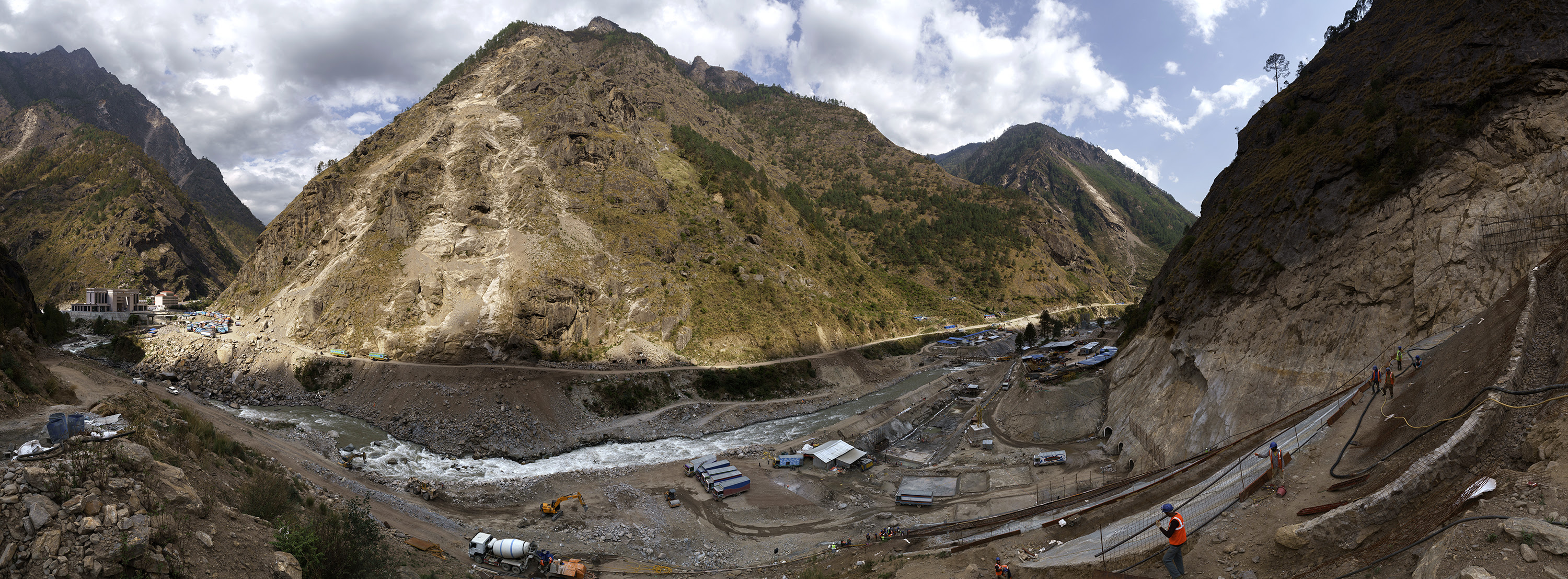KATHMANDU, Nepal—This Himalayan nation is betting that a new energy gold rush borne of its thousands of rivers and craggy peaks will establish it as a major Asian electricity source.
While India, Pakistan and China have all developed massive hydropower plants along the Himalayan mountains, Nepal’s civil war and political instability scared off investment for decades.
Now, thanks to an inclusive peace process that allowed the country’s main rebel leader to be elected prime minister twice, the focus is shifting to Nepal. Hydropower projects worth billions of dollars are in progress, with geologists and investors scouring the landscape for more.
Government surveys show Nepal’s abundant water resources can feasibly yield hydropower equal to more than 40% of U.S. output, a 40-fold increase from today. Officials project almost a third more hydropower capacity will come online this year. More than 100 projects under construction—over 40 since last year—and others in development will yield at least a tenfold increase in the next decade to 10 gigawatts of power, they say.
Nepal Races to Develop Himalayan Hydropower
“There’s such an energy shortage that any project you build will find a market,” said Allard Nooy, CEO of InfraCo Asia, a development body funded by the U.K., Swiss and Australian governments that is financing one hydro project and seeking to develop two more.
Still, power companies don’t face an easy ride.
Among the hurdles are natural ones: earthquakes, landslides and inland tsunamis from glacial lakes as warmer temperatures prompt ice melt. Two years ago a series of massive quakes killed 9,000 people and shattered the country.
Opposition from environmental groups is another difficulty, especially for a new generation of dam projects. In the past, the World Bank and Japan’s Asian Development Bank have withdrawn support for projects amid opposition from environmental groups that say large dams can damage natural habitats like wetlands, threaten migratory fish stocks, and displace traditional farming communities.
Opening the Floodgates
Note: Upper Solu Khola HPP is not shown *Lastest available data
Sources: Nepal’s MInistry of Energy (map); National authorities; USAID
The greater stability has boosted momentum for rising investment in the Himalayas—a region dominated by Nepal, India and Bhutan that is considered the final development frontier in South Asia. Hydro energy projects are the biggest focus.
“The only resource we have, like the Arabian countries have oil, is water,” said Chhabi Gaire, project manager at the Rasuwagadhi Hydroelectric Project, a 111-megawatt plant under construction near China’s border.
Funding for projects is increasingly coming from Nepalese working abroad, says the Nepal Electricity Authority. Their remittances reached $6.7 billion in 2015, according to the World Bank, more than even Thai and South Korean workers abroad sent to their own countries.
Meanwhile, India’s cabinet approved $850 million in February to build a plant on Nepal’s Arun River that would export most of its energy to India. A month earlier, the Chinese-state owned China Three Gorges Company agreed to a joint venture with Nepal’s government to build a $1.6 billion hydropower plant on Nepal’s Seti River, also mainly for electricity export to India.
Last year, investors began operating 9 hydro plants with 140 megawatts of capacity in Nepal. The government hopes to double that pace this year, including finishing projects delayed by the 2015 quakes.
The effort is tough going, given Nepal’s untamed terrain, including the Earth’s highest peak Mount Everest, and the troubled political history.
Tara Dhakal, a 33-year-old foreman at a plant under construction on the Trishuli river near the capital Kathmandu, witnessed a close friend crushed to death by a boulder at another Himalayan project.
“Down on the plains it’s less risky to build hydro plants, but I belong from the hills so I wish to work in the mountains,” he said.

The electricity demand is there. Nepal has faced rolling blackouts in recent years due to inadequate energy supply; nearby India, Bangladesh and Pakistan are growing rapidly and demanding more power.
A shift to bigger projects aims to help address that need. So far, Nepal has mostly developed river-based hydro projects that divert running flows over turbines.

